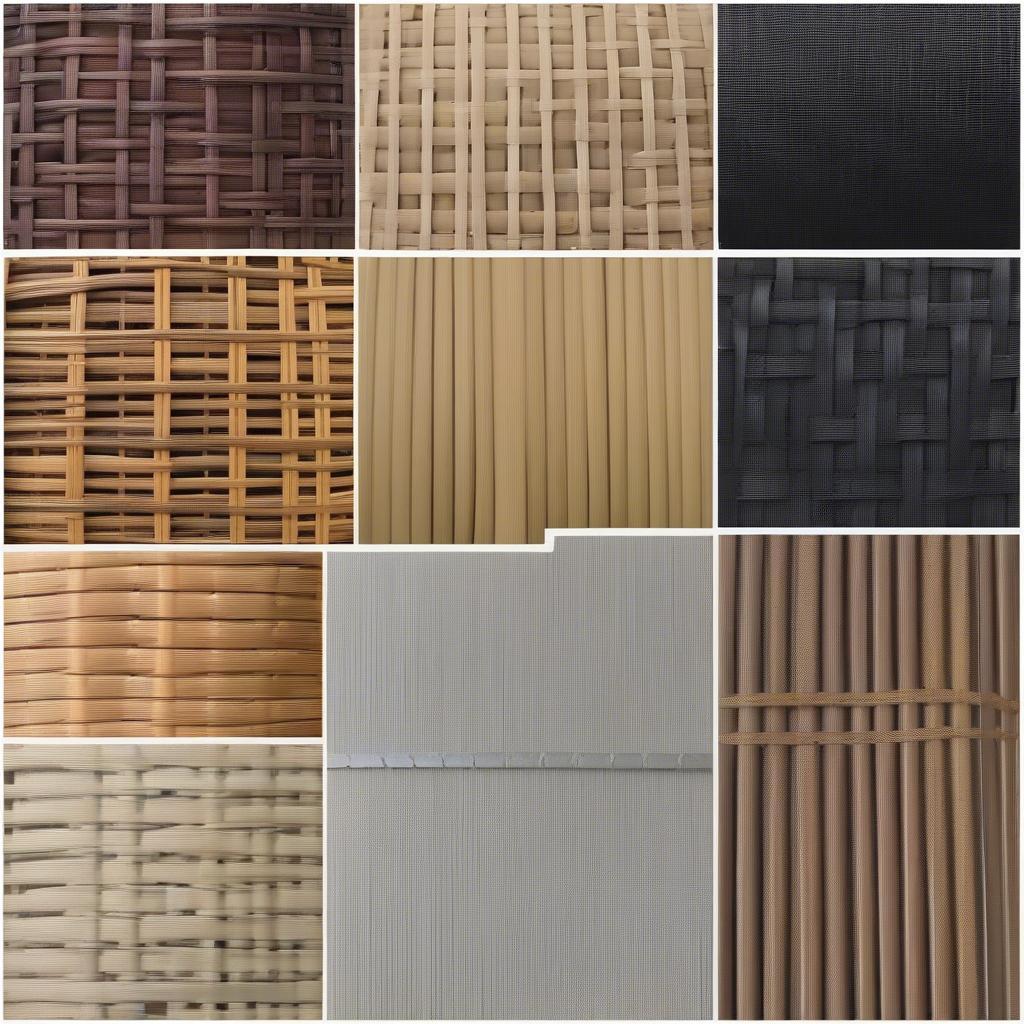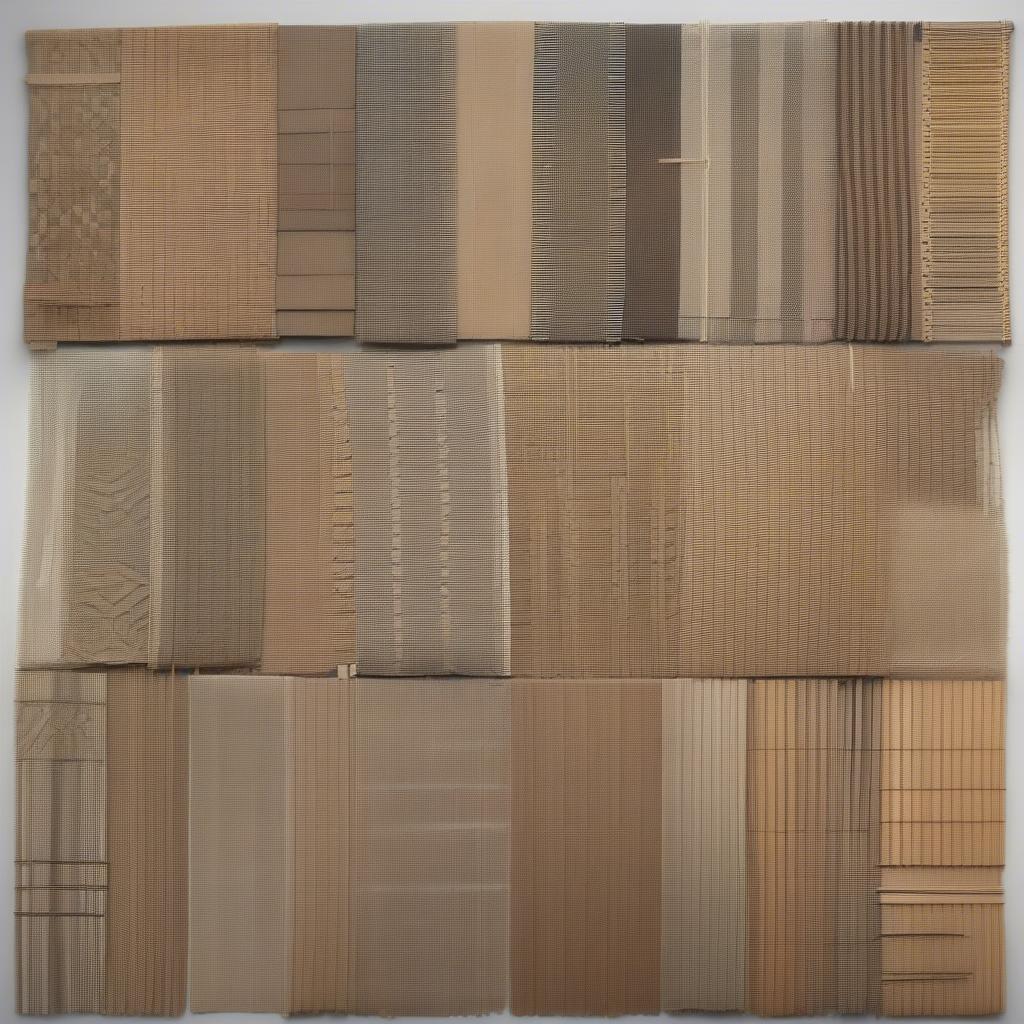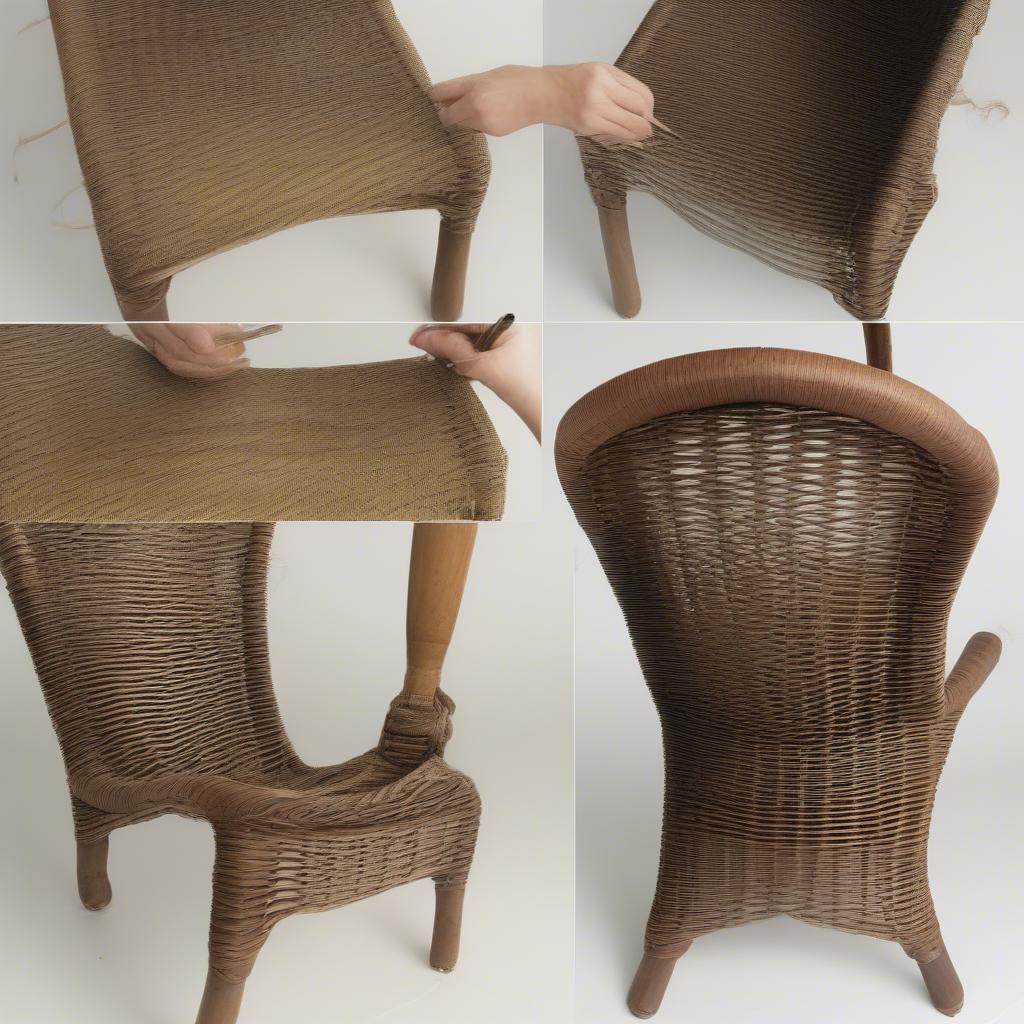Weave Chair
Patio Chair Weaving: A Comprehensive Guide to Repair and Restoration
Patio Chair Weaving is a rewarding craft that can breathe new life into your beloved outdoor furniture. Whether you’re dealing with a broken wicker chair, a sagging rattan seat, or simply want to refresh the look of your patio set, understanding the art of patio chair weaving is essential. This guide explores everything from identifying different weaving materials and patterns to mastering basic techniques and tackling complex repairs.
 Different Weaving Materials for Patio Chairs
Different Weaving Materials for Patio Chairs
Choosing the Right Materials for Patio Chair Weaving
Selecting the appropriate weaving material is crucial for both the aesthetics and durability of your finished product. Natural materials like wicker and rattan offer a classic, organic look, while synthetic options provide weather resistance and longevity. Let’s delve into the pros and cons of each:
- Wicker: A versatile material derived from plant fibers, wicker is known for its lightweight and pliable nature, making it ideal for intricate weaving patterns. However, it’s susceptible to moisture damage and requires regular maintenance.
- Rattan: A strong and durable natural material, rattan is perfect for creating sturdy and supportive chair frames. Its natural resistance to moisture makes it a popular choice for outdoor furniture.
- Synthetic Wicker: Made from polyethylene or PVC, synthetic wicker offers exceptional weather resistance and durability, making it a low-maintenance alternative to natural wicker.
- Nylon Strapping: A cost-effective and durable option, nylon strapping is often used for simpler weaving patterns and provides excellent support.
 Common Patio Chair Weaving Patterns
Common Patio Chair Weaving Patterns
Mastering Basic Patio Chair Weaving Techniques
While the complexity of patio chair weaving can vary depending on the pattern and material, some fundamental techniques apply across the board. These include:
- Preparing the Frame: Ensuring the chair frame is clean, stable, and free of any loose ends is crucial for a successful weaving project.
- Starting the Weave: Securing the starting material firmly to the frame sets the foundation for a tight and even weave.
- Maintaining Tension: Consistent tension throughout the weaving process is key to preventing sagging and ensuring a professional finish.
- Finishing the Weave: Properly securing the end of the weaving material is essential for preventing unraveling and maintaining the structural integrity of the chair.
You can see examples of different weaving patterns on our page about weave chair nz.
Repairing Common Patio Chair Weaving Issues
From broken strands to sagging seats, patio chairs are prone to wear and tear over time. Understanding how to address these common issues can save you money and extend the life of your furniture.
Fixing Broken Strands
Replacing broken strands is a common repair in patio chair weaving. This involves carefully removing the damaged strand and weaving in a new piece, ensuring it blends seamlessly with the existing pattern.
Addressing Sagging Seats
Sagging seats are often caused by stretched or broken weaving material. This can be remedied by tightening existing strands or replacing them entirely, depending on the extent of the damage.
 Repairing a Patio Chair Weave
Repairing a Patio Chair Weave
What are the best materials for patio chair weaving in humid climates?
Synthetic wicker and nylon strapping are ideal for humid climates due to their resistance to moisture and mildew.
How can I prevent my woven patio chairs from fading in the sun?
Using UV-resistant sprays or covers can help protect your woven chairs from sun damage and fading.
Our page on open weave cane chair might give you some more insights.
“Investing in quality materials and taking the time to master fundamental techniques are key to successful patio chair weaving,” says renowned furniture restorer, Amelia Carpenter. “With a little patience and attention to detail, you can transform your worn-out patio furniture into stunning pieces that will last for years to come.”
“Don’t underestimate the importance of proper maintenance,” adds John Miller, a seasoned wicker craftsman. “Regular cleaning and protection from the elements can significantly extend the life of your woven furniture.” You might be interested in exploring mexican chair weaving for inspiration.
Patio chair weaving allows you to revitalize your outdoor space while preserving the charm of handcrafted furniture. By following these guidelines and investing time in practice, you can master this valuable skill and enjoy the satisfaction of restoring your cherished patio chairs to their former glory. For those looking for a quicker fix, consider metal basket weave chair. Or maybe you are looking for something more portable like weave folding lawn chair. Remember, the beauty of patio chair weaving lies in the ability to personalize your outdoor space with unique and functional pieces that reflect your style.
FAQ
- What is the difference between wicker and rattan?
- What are the best weaving materials for outdoor use?
- How do I repair a broken strand in my wicker chair?
- How can I prevent my woven chairs from sagging?
- What tools do I need for patio chair weaving?
- Where can I find patio chair weaving supplies?
- How long does it typically take to weave a patio chair seat?
Need further assistance with your patio chair weaving project? Contact our 24/7 customer support hotline at +84 388 951 999 or visit us at Hanoi, Vietnam or Tech Avenue, Suite 12, San Francisco, CA 94105, USA.
